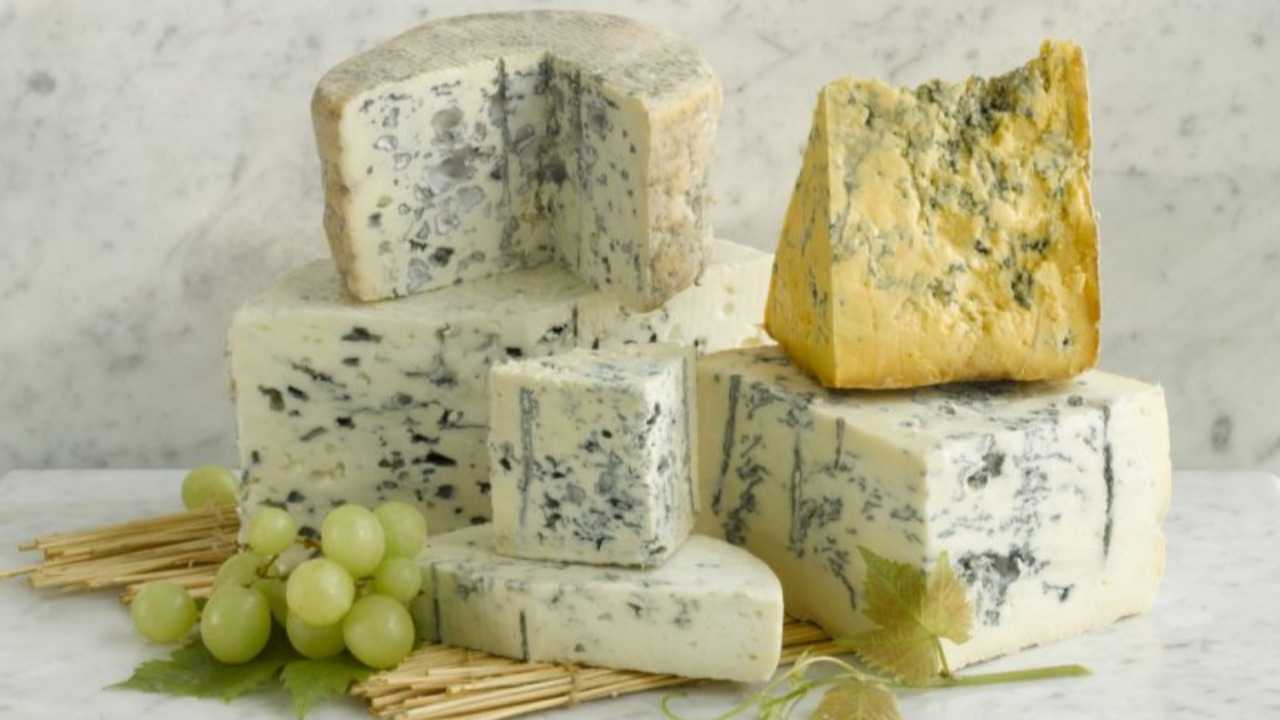The secrets of moldy cheese: between controlled delights and invisible dangers
Moldy cheese can exist in two forms: with controlled molds, which are often regarded as noble and beneficial for enhancing the cheese's flavor, and with uncontrolled molds, which can pose potential risks to health.
1. Cheeses with controlled molds:
Certain cheeses, such as brie, camembert, Roquefort, Bleu d'Auvergne, and Coulommiers, are deliberately crafted by introducing specific fungi, like Penicillium camemberti or Penicillium roqueforti. These controlled molds play a crucial role in the cheese-making process, creating the characteristic mold on the cheese's surface. They are carefully selected and monitored to ensure they contribute to the desired texture, aroma, and taste of the cheese. Controlled molds are generally considered safe for consumption and are even considered indicators of quality in certain cheese varieties.
2. Cheeses with uncontrolled molds:
Conversely, when molds develop naturally on cheese due to aging, degradation, or exposure to excess moisture, they can be uncontrolled molds. These molds may consist of various species that have not been intentionally introduced or monitored during production. Uncontrolled molds have the potential to produce mycotoxins, toxic substances that can be harmful if consumed in significant quantities. While not all moldy cheeses contain mycotoxins, their formation is a possibility, particularly under certain conditions. Consumption of cheeses contaminated with uncontrolled molds and mycotoxins can lead to gastrointestinal issues, allergic reactions, and, in severe cases, organ damage.
3. Precautions to consider:
When consuming moldy cheese, it is generally advised to exercise caution. Here are some guidelines:
- Controlled molds: Cheeses with intentionally introduced molds are typically safe to consume when properly produced and stored. However, individuals with specific mold allergies or sensitivities should be cautious and consult healthcare professionals if needed.
- Uncontrolled molds: If visible mold is present on a cheese and is not an intentional characteristic (e.g., blue cheese), it is advisable to discard the affected portion or the entire cheese. Uncontrolled molds may harbor harmful mycotoxins, and their presence cannot be determined without laboratory testing. Soft or fresh cheeses with visible mold should be discarded entirely, as mold can quickly spread.
- Storage and handling: Proper storage in a cool, dry environment and appropriate wrapping in breathable materials, such as cheese paper or wax paper, can help prevent the growth of uncontrolled molds. Avoiding cross-contamination by separating moldy cheeses from other food items is essential.
